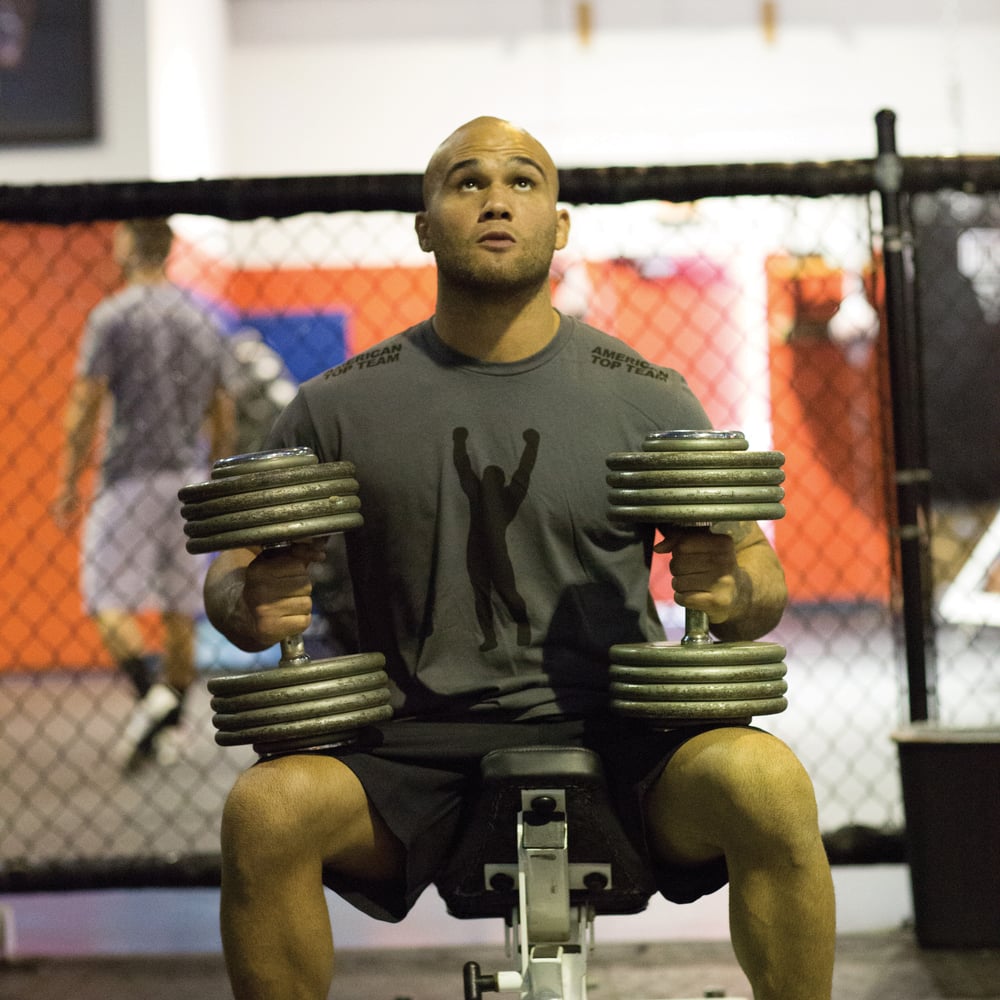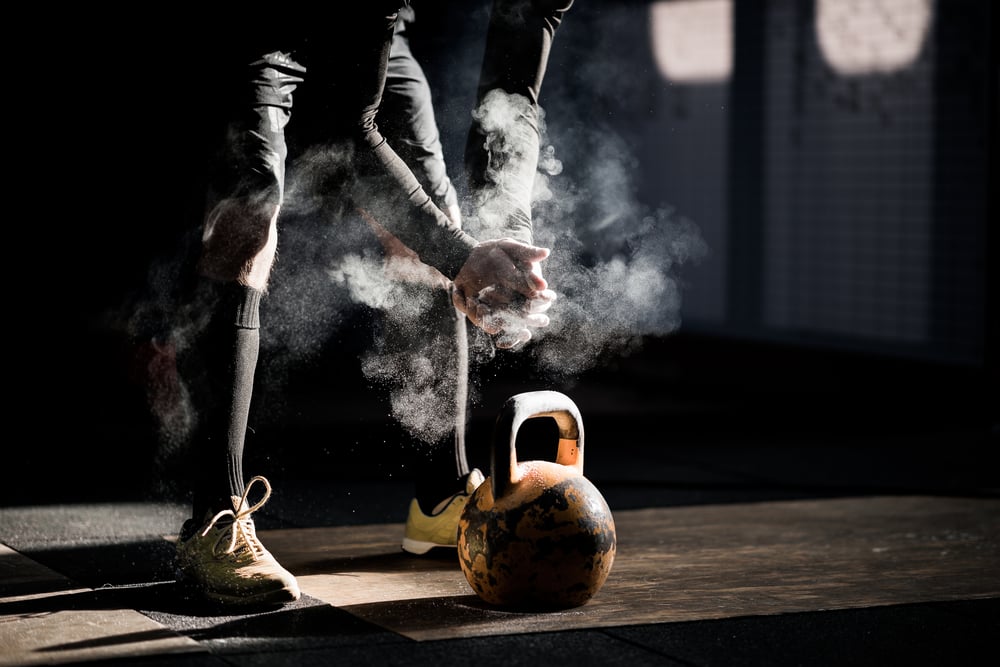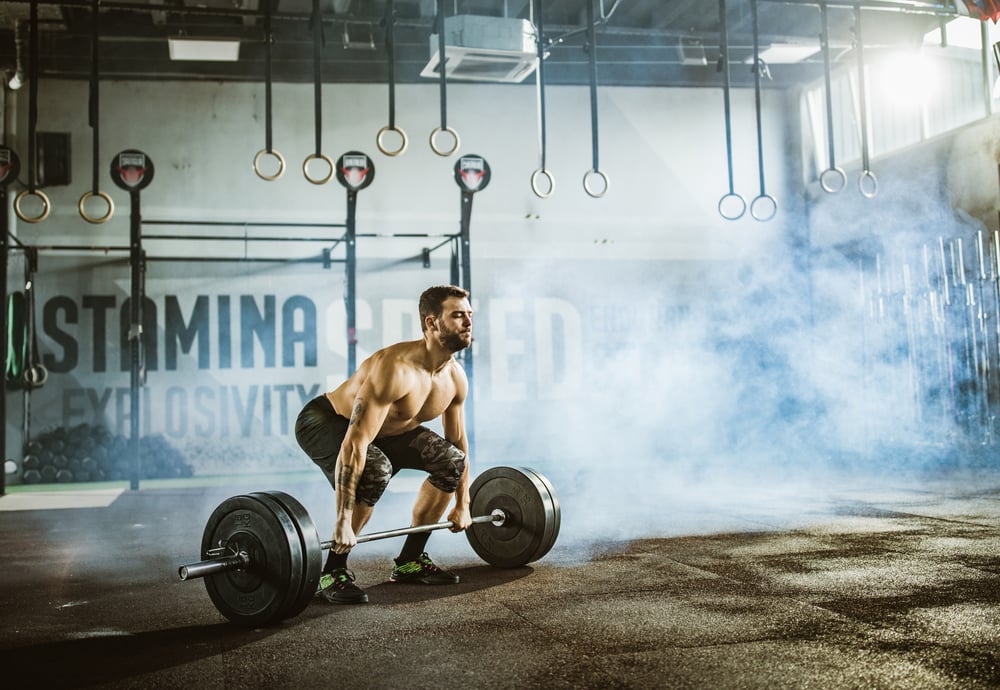
Issue 217
May 2025
Ray Klerck breaks down the science-backed 12-week program that boosts power, protects your neck, and keeps you off the injury list.
As MMA training evolves into an increasingly exact science, some fighters may still train like every session is a title fight, not part of a bigger plan. This space can be where progress stalls. What’s often missing is a structured, periodized training plan that reflects the demands of the sport. That gap is what a group of expert researchers at Sacred Heart University, Connecticut, set out to close. Their capstone project, built by a Department of Physical Therapy and Human Movement Science team, crafted a 12-week strength and conditioning program specifically for MMA. It wasn’t just slapped together in a lab. The reps were road-tested on a live subject: a 26-year-old welterweight amateur fighter with no prior injuries. The result? A practical, fight-specific plan that gets results without breaking the athlete. The idea is simple: train for what the sport demands. These include explosive strength, grip dominance, neck resilience, and aerobic efficiency. The program runs in three mesocycles: strength, muscular endurance, and aerobic conditioning. Each was precisely engineered to develop a fighter who can hit harder, last longer, and avoid the injury pile.
WHY PERIODISATION KILLS IT
Periodisation isn’t just something powerlifters whisper about between 1RMs. It’s how serious athletes avoid plateaus, prevent injuries, and actually improve. In MMA, it’s even more vital. You’re not training one trait, you’re juggling speed, strength, conditioning, mobility, and recovery. Without structure, it all becomes a noisy mess. That’s why this 12-week program uses classic periodisation to sharpen one trait at a time across three 4-week blocks: strength, muscular endurance, and aerobic conditioning. Each week includes three training sessions (usually Monday, Wednesday, and Friday), with at least 48 hours between workouts to allow your body to adapt. That’s not laziness, it’s biology. You grow on rest days, not in the middle of your 13th set of sled drags. Even during workouts, rest between sets is planned based on the goal. Heavy strength sets come with 2–3 minutes of rest. Conditioning work? 30–60 seconds, tops. It’s all built for progressive overload, adding intensity, reps, or complexity each week to keep you evolving without burning out. Over 12 weeks, that adds up to 36 progressive sessions serving a specific purpose, even as some core exercises are repeated and adapted. Periodisation works because it respects adaptation. It gives your body time to grow, time to recover, and time to peak.

WEEKS 1–4: STRENGTH WITHOUT SORENESS
The first phase is all about strength. However, it’s not the kind that leaves your knees hobbling like you owe the mob money. These first four weeks focus on concentric-only lifts. That means zero eccentric movements where you lower the weight slowly. No dramatic tempo drops, just push, press, and get stronger. At the core of this are exercises like box squats, sled pushes, and pin presses, which allow fighters to lift heavy without frying their central nervous system or dealing with days of debilitating post-workout soreness. That means more training days, more consistency, and fewer sessions lost to active recovery that’s mostly groaning and stretching. There was also the addition of unilateral lifts and anti-rotational core work, and you’re building force and bulletproofing the joints you’ll actually use in a fight. And then there’s neck work. If you’re not training your neck, you’re just volunteering it for a choke. The researchers identified that the cervical spine takes a beating in MMA, so strengthening it early pays off later. Think of this block as pouring concrete into your foundation. No matter how wild the storm gets later, you won’t crack. You’re hardening your frame, so every punch thrown and clinch gripped lands from something solid. Strength isn’t decoration here. It’s your anchor when chaos breaks loose.
PUT PHASE ONE INTO ACTION
Day 1 – Max Strength & Stability
Back Squat – 4x5
Pin Press – 4x3
Single-Leg RDL – 3x6/leg
Sled Push – 5 x 20m
Pallof Press – 3x10/side
Neck Isometrics – 3x10s each side
Day 2 – Explosive Concentric
Box Squat to Parallel – 5x3
Medicine Ball Slam – 5x5
Chin-Ups (weighted if possible) – 4x6
Sled Rows – 3x20m
Side Plank with Reach – 3x30s
Neck Harness Extensions – 3x15
Day 3 – Unilateral and Core Integration
Bulgarian Split Squat – 3x6
Landmine Press –.3x8
Farmer’s Carry – 4 x 20m
Anti-Rotation Cable Press – 3x10
Echo Bike Intervals – 30s on / 60s off x 6
Neck Flexion/Extension with Band – 3x12

WEEKS 5–8: TRAIN YOUR TANK TO HIT
Now that you’ve braced the structure, it’s time to test it in the storm. Weeks 5–8 ratchet up the reps, drop the rest, and flood the muscle fibers with lactate. This block is for muscular endurance, where your body learns to suffer without folding. It includes push-up supersets meet bike sprints, and fat bar rows that torch your forearms. The researchers are quick to note that everything is done with intention. The goal isn’t to just feel tired. It’s to simulate round-after-round energy output under fatigue. You’ll still lift, but you’ll lift while your lungs are screaming. Those long exchanges, extended scrambles, and stubborn submissions get built in this section. More importantly, it’s where you learn how to move efficiently under duress, because in a fight, muscular endurance builds finishers. You’ll also layer in core training that mimics the torque and twist of real fights, not just plank holds that look good on your feed. The way it’s structured, every session in this block is a character test, and it shapes the version of you that shows up when the lights are on and the mouthpiece is in.
PUT PHASE TWO INTO ACTION
Day 1 – Volume Block (Push Focus)
Push-Up Block B – 10x10
DB Chest Press – 4x10
Jump Rope – 5 x 1min
Side Plank with Band Pull – 3x20s
Band Neck Holds – 3x20s each side
Day 2 – Grappling Grind (Pull Focus)
Fat Bar Pendlay Rows – 4x10
Inverted Rows – 3x12
Bodyweight Squats into AirBike – 3 rounds
Seated Russian Twists – 3x30s
Neck Isometrics – 3 rounds
Day 3 – Total Body Supersets
Lunge with Rotation Superset Jump Squat – 4 rounds
Pull-Ups Superset with Battling Ropes – 4.rounds
Core Circuit: V-ups, Bird Dogs, Hollow Holds – 3 rounds
Neck Lateral Flexion – 3x12
Long Slow Distance Shadowboxing – 15 min

WEEKS 9–12: AEROBIC FITNESS PHASE
The final four-week block dials in aerobic capacity. You laid the concrete, now we see if it holds when the pressure piles on and the walls start to shake. That means Echo bike intervals, sled sprints, and progressive VO₂ max work that keeps your heart rate bouncing like your opponent’s head off the mat. You’re building a structure that doesn’t quit when the bell sounds. Layered on top is neck training that continues to support the most abused joint in the sport, your head’s anchor. The study showed this approach reduced injury risk and improved the ability to recover mid-round, stay defensively sound, and absorb blows without becoming a bobblehead. It’s gritty, it’s simple, and it’s wildly effective. Most fighters skip this kind of cardio or treat it like an afterthought. That’s a mistake. This block turns you from someone who can go three rounds into someone who can dominate three rounds. It’s not flashy. But neither is getting your hand raised while your opponent leans on the cage, gasping like they tried to sprint a marathon. Fight shape isn’t optional. It’s what makes the rest of your training count.
PUT PHASE THREE INTO ACTION
Day 1 – Cardio Engine
Echo Bike Intervals – 30s on / 60s off x 6
Sled Drags – 3 x 30m
Core: Cable Rotations + Rollouts – 3 rounds
Neck Harness Work – 3x15
Day 2 – Mixed Modal Conditioning
Jump Rope Tabata – 8 rounds
Single-Arm Farmers Carry – 4 x 30m
Side Plank March – 3 rounds
Core Ball Slams – 4x10
Neck Flexion with Resistance – 3x12
Day 3 – Aerobic Power
Assault Bike Pyramids (20s/40s/60s/40s/20s)
Ground and Pound Bag Drills – 5 x 1 min
Bear Crawl – 4 x 20m
Plank to Push-Up.– 3x10
Neck Isometric Circuit – 3 rounds
PREHAB OVER REHAB
What sets this program apart isn’t just what it does for your muscles, but what it avoids: injuries, missed sessions, and lingering joint pain. That’s where the accessory work comes in. These include core stabilization, grip drills, unilateral movements, and neck training, which are part of an insurance policy for performance. Each movement has carryover into scrambles, clinches, sprawls, and strikes. Grip strength gets better through fat bar rows and controlled pull-ups. Core strength improves through anti-rotation lifts that actually mimic the sport. This program is a plan forged on the mats and in the data. The athlete who followed this plan dropped weight, gained force, and avoided injury. He showed up stronger, better conditioned, and more technically sound. And the best part? He didn’t have to train like a lunatic to get there. He trained smart.
STRONGER WITHOUT BREAKING
This isn’t a reinvention of strength training. It’s a reintroduction of common sense. If you’re an amateur fighter, coach, or someone tired of random workouts leading to random results, this is your callout. Follow the structure. Strength first, then endurance, then conditioning. Keep the neck strong, the grip tighter, and the movements specific. Stop guessing. And for the love of your spine, train with the future in mind. The periodization in this program isn’t just about looking good shirtless or benching a PR. It’s about showing up healthy, powerful, and capable when it matters. When the round starts. When the pace picks up. When everything burns, and you still have to shoot, sprawl, or swing. That’s when real strength shows up. And it starts with a plan built for the fight, not the mirror.
...









